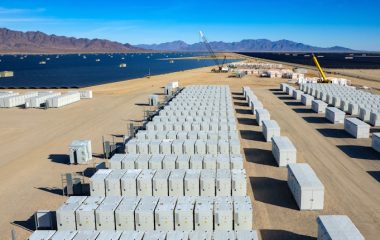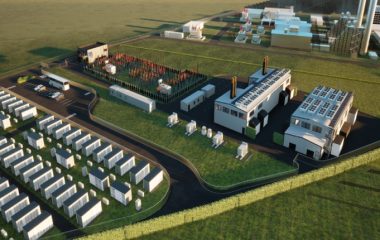
Photo: nek.si
The Slovenian parliament has adopted a new national spatial planning strategy until 2050, which allows for the construction of small modular reactors (SMRs) and the expansion of the existing Krško nuclear power plant, specifically the Krško 2 project. The document facilitates the issuance of location permits for new nuclear facilities in the country.
Slovenia’s new spatial planning strategy until 2050, adopted by the Slovenian parliament, provides a basis for the further development of nuclear energy in the country and the construction of SMRs.
The strategy opens up possibilities for the construction of multiple small modular reactors throughout the country, said Uroš Brežan, the Minister of Natural Resources and Spatial Planning.
The strategic document notes that the “spatial possibilities” for new nuclear facilities will be considered
The new strategic document states that “spatial possibilities” for energy production in nuclear facilities are being considered within the context of a comprehensive examination of the long-term use of nuclear energy, including economic, social, and environmental aspects.
One step closer to the Krško 2 nuclear reactor
The previous spatial development strategy, adopted in 2004, only allowed for extending the operation of the existing unit at the Krško nuclear power plant.
The new spatial planning strategy paves the way for the announced expansion of the country’s sole nuclear power plant.
Minister Brežan emphasized that the new strategy provides a legal basis for the site allocation for the new unit of the Krško plant. Although the document does not specify the exact location for Krško 2, Slovenian media report that the new reactor unit will be near the existing plant.
Prime Minister Robert Golob recently stressed that Slovenia is determined to accelerate the project for the second reactor in Krško, which could be connected to the grid by 2037. The planned capacity of the reactor is up to 1.6 GW, and the investment could cost up to EUR 11 billion.
More specific regulations for the second reactor site designation are required, and the parliament has made this possible with the new spatial plan. Also, the decisions regarding the construction of new reactors must go through legal procedures, including obtaining approvals and involving the public.
Furthermore, neighboring Croatia has provisionally supported the plan for Krško 2, while Austria opposes the project. As previously decided, the lifetime of the existing unit at Krško has been extended, and it will stay in operation until 2043.
SMR technology is a solution for the country’s energy supply
Companies such as American Westinghouse are developing SMRs and promoting the technology in Slovenia, according to Sloveniatimes. In recent months, the country’s officials have indirectly discussed the possibility of installing SMRs in order to achieve faster access to more nuclear energy.
Minister of the Environment, Climate, and Energy Bojan Kumer has also said that nuclear energy will be included in the updated National Energy and Climate Plan (NECP) in the long term.
Radioactive waste management in Slovenia
According to the new spatial strategy, there will be a permanent repository for radioactive waste at the Vrbina site, near the border with Croatia. This repository is intended for the disposal of low- and intermediate-level radioactive waste generated during the operation and decommissioning of the Krško nuclear power plant.
The Vrbina site will be a permanent repository for low- and intermediate-level radioactive waste generated at Krško
According to the spatial plan, solutions for the permanent disposal of high-level radioactive waste are being sought in collaboration with the broader international community.
New prospects for SMR technology
SMR technology is still in the build-up, but is expected to become a significant energy source in the next decade. This technology allows the construction of reactors with smaller capacities, up to 300 MW, which can be more flexible and efficient than traditional nuclear power plants.
SMRs will take a more prominent role in the next decade due to the advantages of serial production, lower costs, and faster construction
According to a report by consulting firm IDTechEx on the prospects of the SMR sector, this technology will establish its position in the next ten years due to the advantages of serial production, lower costs, and faster construction. Small modular reactors could reach a 2% share of the global electricity supply by 2043.
Romania could become the first country in the region to build an SMR. Nuclearelectrica has signed agreements for SMR deployment in the country and the region.
The SMR innovation is being brought by Finnish company Steady Energy, which is preparing to build the world’s first district heating system with an SMR of 50 MW. The company plans to start the system operation by the end of 2030.









Be the first one to comment on this article.